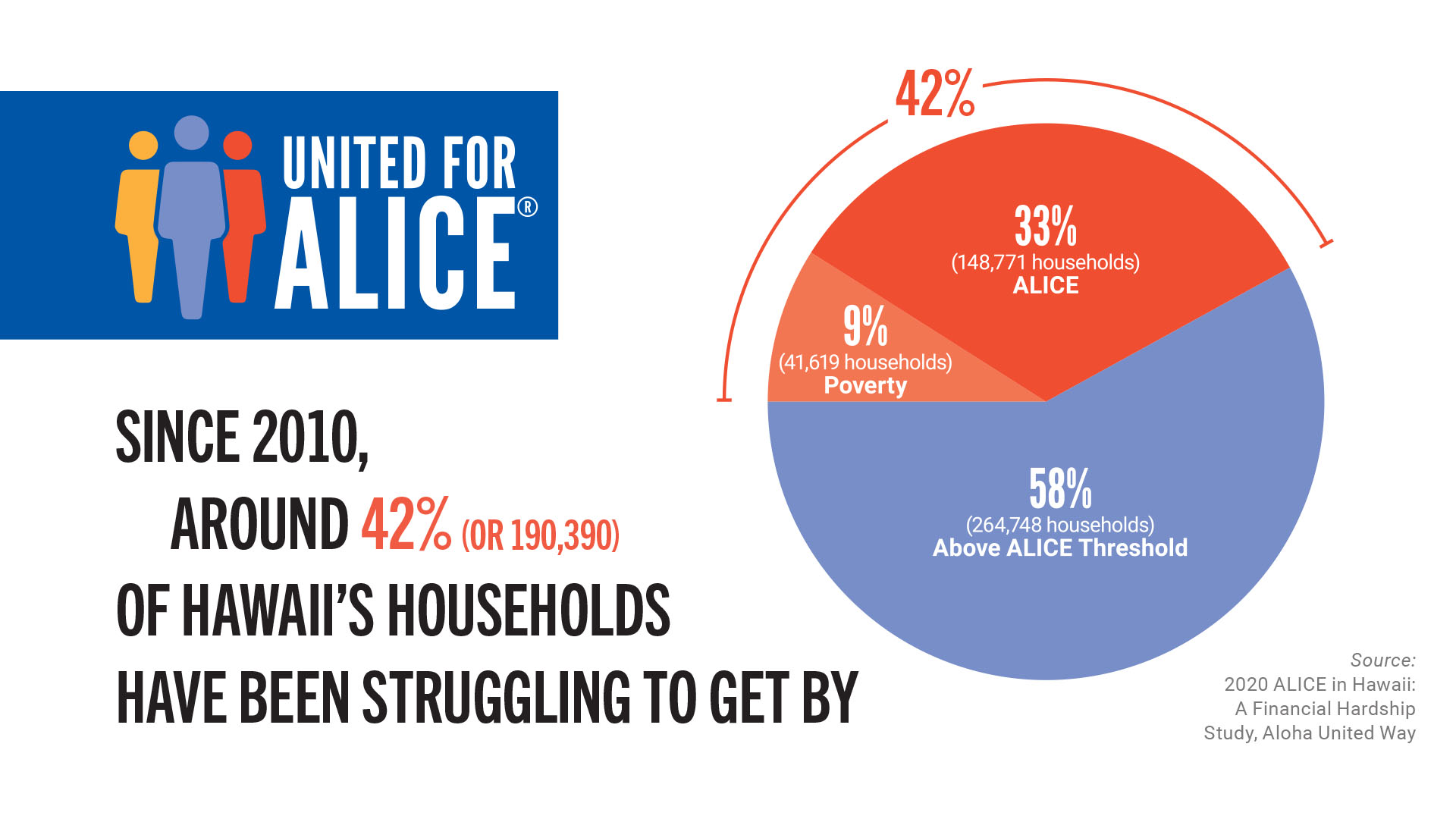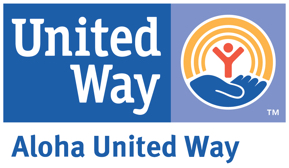
The Covid-19 pandemic has exacerbated the economic hardships for the Hawaii households that are above the federal poverty line but still barely getting by and has caused their numbers to jump to more than half the state’s population, according to Aloha United Way.
The economic shock caused by the pandemic has caused the percentage of households considered to be ALICE — asset limited, income constrained, employed — or below, to jump to 59%, according to Aloha United Way, which has seen a 600% increase in calls to its 211 helpline from people seeking assistance during the pandemic.
According to the 2020 ALICE report released by Aloha United Way Thursday — which was completed before the pandemic — 42% of households were considered ALICE or below before the statewide shutdowns began in late March. That included 9% of households below the federal poverty line and 33% of households that were above the poverty line but were struggling to make ends meet.
Since then, the percentage of households at ALICE level or below has increased by 17 percentage points to 59%, according to an estimate by the Hawaii Data Collective on the potential impact of the pandemic in the near term and long term, which found “that, without intervention, the sudden economic shock that resulted from measures implemented to mitigate the spread of COVID-19 increased the percent of ALICE and below households to 59 percent from 42 percent pre-COVID-19.”
AUW said that means the addition of 78,000 households to the 190,390 households that were already considered vulnerable, or a total of 268,390.
Lisa Kimura, vice president of community impact at AUW, said increases to the cost of living and household essentials, combined with stagnant wages, contributed to the increase in the number of ALICE households even before the pandemic began.
“The only increase in jobs that we have seen have been in low wage jobs, which are not enough for people to get by,” she said. “We haven’t seen any growth in mid- to high-wage jobs that do pay people a living wage.”
AUW President and CEO John Fink noted that when money from the Paycheck Protection Program and other government aid programs begin to dry up, as well as layoffs and furloughs, are “going to create a huge amount of pressure."
He said the callers to the AUW 211 line are asking about “the same things that the ALICE report talks about – shelter, money, food, all the needs you would expect.”
“These are not issues that allow us time to sit back and make five-year plans,” Fink said. “These are issues that need addressing immediately and that’s one of the things the ALICE report showed us and has been even more monumental with what’s happening with Covid-19.”
The ALICE Report was first issued three years ago to provide a framework, language, statistics and tools to inform policy and gain a greater understanding of the growing ALICE population.
The updated report is sponsored by the Bank of Hawaii Foundation, Hawaii Community Foundation and Kamehameha Schools, and was compiled with an improved methodology, according to Aloha United Way.
The full report can be found here.
